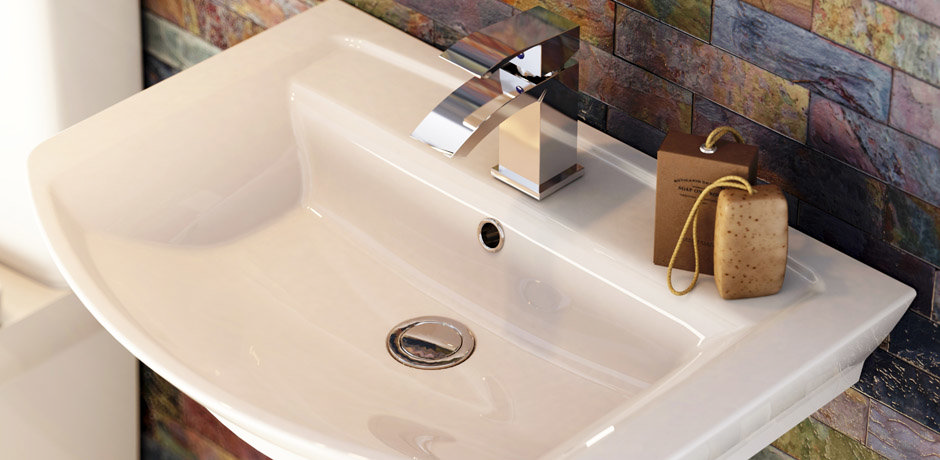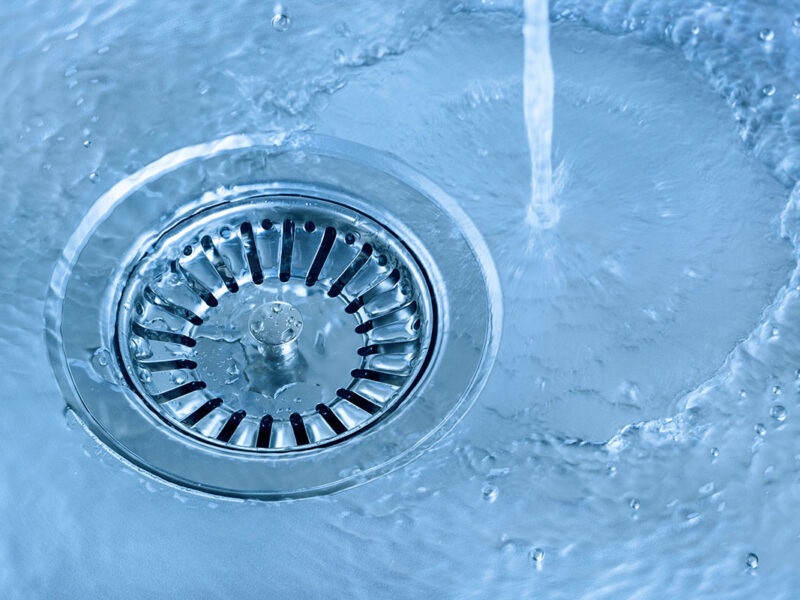What're your concepts about How to Fix a Slow Draining Sink?

Intro
We have actually all existed: You're brushing your teeth or washing your hands, and you notice the water merging in the sink. Rather than quickly swirling down the drain, it sticks around, transforming your once-refreshing morning regimen into a small swamp scene. A slow-draining sink isn't just aggravating; it's commonly an indication of larger pipes problems prowling under the surface area. The good news is that most slow-draining sinks can be taken care of with a little know-how, a few standard tools, and some perseverance. Ready to tackle this task head-on? Let's roll up our sleeves and dive right in.
Understanding the Sources Of a Slow-Draining Sink
Before you start poking around in your pipelines, it aids to understand what could be causing the downturn. Recognizing the origin makes it less complicated to select the ideal repair.
Typical Culprits Behind Slow Water Drainage
So, what's blocking things up? Normally, it's a mix of everyday particles-- believe hair, soap residue, tooth paste residue, and remaining food bits. With time, these little bits collect and hold on to the pipe walls, gradually tightening the flow and making it harder for water to go through. Sometimes, natural resource from hard water can also include in the substance, producing the ideal tornado for persistent clogs.
When is it Time to Do Something About It?
If you discover the water draining slower than usual, it's a good concept to step in earlier rather than later on. Waiting as well long can lead to complete clogs, undesirable smells, and even pipe damages. If the water takes more than a few secs to clear out after switching off the faucet, consider it a red flag and prepare yourself to put on your DIY hat.
Devices and Products You'll Require
The right devices make all the difference. Fortunately, you won't need a fully stocked plumbing technician's van to do the job.
Vital Tools for DIY Repair Works
A plunger is your best starting factor. A tiny, sink-sized bettor produces suction that can displace minor obstructions. For even more persistent blockages, a drainpipe snake (in some cases called a plumbing professional's auger) functions marvels. A pair of gloves, a flashlight, and possibly a pair of protective safety glasses are additionally convenient.
Suggested Cleaning Solutions
Moderate recipe soap and warm water can help break down oily accumulation. A blend of cooking soda and vinegar is a reliable natural home remedy, and chemical cleaners provide an even more environment-friendly approach. Keep chemical drainpipe cleansers as a last resort, as they can be extreme on your pipelines.
Safety First: Safety Measures and Prep work
Before you launch into unclogging mode, consider safety. You're taking care of potentially unclean water and debris, so slip on a set of handwear covers. If you're using chemical cleaners, make sure the room is well-ventilated and comply with the directions on the tag.
Protective Equipment and Office Setup
Set some old towels or cloths around the sink area to capture splashes. Clear away any products that might enter your means, like soap dispensers or toothbrush holders. See to it you have excellent lights-- get a flashlight if required.
Step-by-Step Guide to Repairing a Slow-Draining Sink
Currently, let's enter into the nitty-gritty. This step-by-step process will certainly assist you via easy strategies to recover your sink's drainage.
Action 1: Get Rid Of and Clean the Stopper
Often, the stopper (that tiny plug you lower to block water) is the very first wrongdoer. Remove it meticulously and clean off any type of hair or substance entraped around its base. Wash it thoroughly before putting it back in position.
Action 2: Use a Bettor to Displace Particles
Got that bettor all set? Position it over the drain and provide it a few firm pumps. The idea is to develop suction that can loosen up any kind of obstruction. If you see littles particles floating up, you get on the appropriate track.
Action 3: Try a Drainpipe Serpent or Cable Wall Mount
If the bettor doesn't work, it's time to draw out the drainpipe serpent. Delicately feed it into the drainpipe and spin as you go. You could feel some resistance-- that's likely the obstruction. Keep turning and drawing till you get rid of the blockage. If you do not have a drain serpent, a straightened wire wall mount can work in a pinch.
Tip 4: Apply a Do It Yourself Drainpipe Cleaner
An all-natural cleaner made from cooking soda and vinegar can break down recurring crud. Pour half a cup of baking soft drink right into the drain, adhered to by half a cup of vinegar. Let it fizz for about 15 mins, after that flush with warm water. This chain reaction commonly does marvels for minor obstructions.
Tip 5: Reconstruct and Test the Sink
Placed everything back with each other and run the tap. Does the water currently swirl down the drain at a reputable rate? If yes, offer on your own a pat on the back. Otherwise, don't despair-- there are still a few more tricks up your sleeve.
Alternative Methods for Stubborn Clogs
Not all clogs are developed equivalent. If your sink still declines to work together, consider these alternate services.
Baking Soda and Vinegar Approach
We already discussed this, yet it deserves keeping in mind again. This gentle, environment-friendly method is safer than chemical cleansers and usually quite reliable.
Enzymatic Drain Cleansers
Enzyme-based cleaners use natural microorganisms to absorb raw material. They're an exceptional selection if you're wanting to avoid harsh chemicals. Simply keep in mind, they may take a bit longer to function their magic.
Chemical Drain Cleansers: Advantages And Disadvantages
Chemical cleaners can blast with tough blockages quickly, however they're not without disadvantages. They can produce warm and fumes, damages pipelines if made use of exceedingly, and posture ecological risks. Utilize them moderately, and always comply with the instructions carefully.
Preventive Measures to Maintain Your Sink Flowing
Avoidance is the very best cure. By adopting a few easy habits, you can keep your sink from decreasing to begin with.
Regular Cleansing Practices
Clean down the sink container and component location consistently. Eliminate hair or food fragments prior to they have a chance to wash down the drainpipe.
Avoiding Damaging Materials Down The Tubes
Reconsider before dumping coffee premises, oil, or fibrous veggie scraps down the sink. These offenders hold on to pipe wall surfaces, producing blockages gradually.
Routine Upkeep Checks
Schedule a quick month-to-month evaluation. Run warm water via the sink for a few mins, paying attention to the circulation. If it appears slow-moving, act quickly prior to it ends up being a full-on clog.
When to Call a Specialist Plumbing
Sometimes, no matter how tough you attempt, that block just will not budge. That's when it's time to generate the pros.
Indications That Indicate an Extra Significant Problem
If your sink drains slowly despite multiple attempts, or if you notice water supporting in other fixtures (like your shower or commode), you might have a more significant pipes issue prowling deeper in the system.
Stabilizing Do It Yourself Efforts with Professional Help
While DIY can save you money and offer a feeling of achievement, there's no embarassment in calling a specialist. An expert plumbing professional can evaluate your entire plumbing configuration, ensuring there's no underlying damages or lasting trouble that can cost you more later on.
Contrasting Expenses and Long-Term Solutions
Before deciding, take into consideration the big picture. An affordable, quick fix may address the trouble momentarily, however purchasing a more permanent solution can conserve you money and stress in the long run.
Considering the Expenditures of Do It Yourself vs. Professional Solutions
DIY fixes commonly set you back little greater than the price of a bettor or a bottle of baking soft drink. Professional solutions, on the other hand, included a price tag however may stop repetitive concerns and expensive repair services later on.
Purchasing Quality Fixtures and Upgrades
If your sink's design adds to frequent obstructions, it may be worth upgrading to higher-quality fixtures or modifying the pipes layout. Consider this a financial investment in your home's performance and convenience.
Conclusion
A slow-draining sink can feel like a minor irritation, however it's usually an indicator that your pipes requires a little tender loving care. By comprehending the origin, employing the right tools and techniques, and committing to simple preventive measures, you can maintain your sink streaming freely. And when all else stops working, never be reluctant to contact a specialist-- your home's pipes deserves the investment in treatment and upkeep.
4 Tips to Fix a Slow Draining Sink
Removing the Pop-Up
This is a great place to start when it comes to troubleshooting a slow draining sink. If your sink has a pop-up, carefully take it out and remove debris that has built up around the tool. This will also allow you to see if there are any significant blockages in the drain that you can pull out on your own to help clear up the issue.
Use a Zip-It Tool
Like a snake for a large drain, a zip-it tool helps clear out any debris or hair from a sink drain. A tool like this can be used with a drain that pops out or not as it s thinner than most snake-like tools.
Use a Drain Cleaner
Whether making an at-home cleaner or buying a solution at the store, this is a common fix many turn to when it comes to a slow draining sink. There are several options available for purchase at local supermarkets, but for those who prefer to create their own solution, one of the most common is the following.
How to Unclog a Drain Naturally
Pour boiling water down the drain Pour cup of baking soda down the drain Pour cup of vinegar down the drain Wait 10 minutes Pour boiling water down the drain again Turn on the hot water faucet to clear out the solution Use a Plunger
As a worst-case scenario option, a plunger may be a good option for those who are still struggling to get debris out of their drain. This could be especially useful if there is a large item that you suspect may be significantly stuck down the drain.
https://www.abaileyplumbing.com/blog/2021/august/4-tips-to-fix-a-slow-draining-sink/

I am just very inquisitive about and I hope you enjoyed the entire blog post. Sharing is good. Helping others is fun. I thank you for your readership.
Call Today